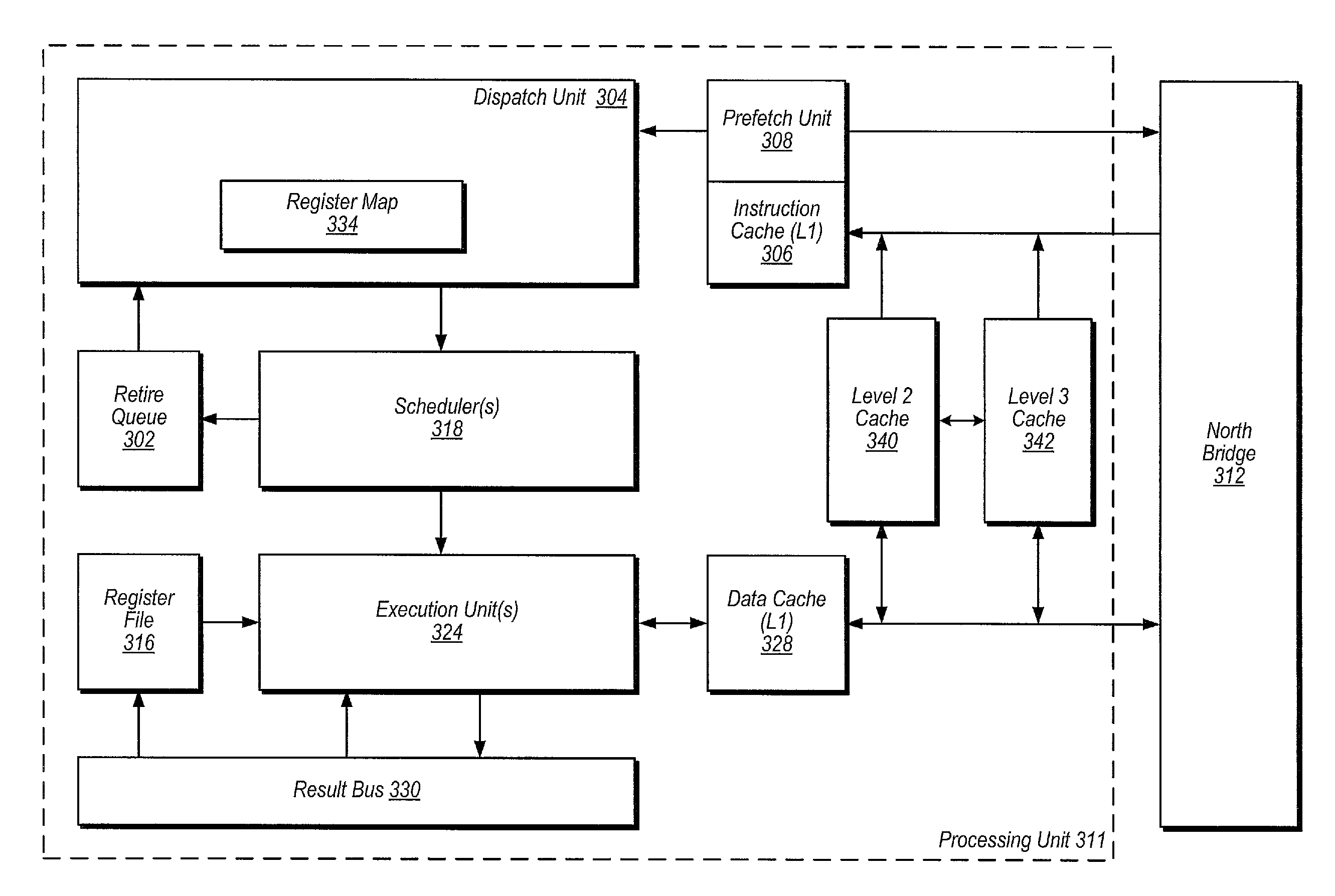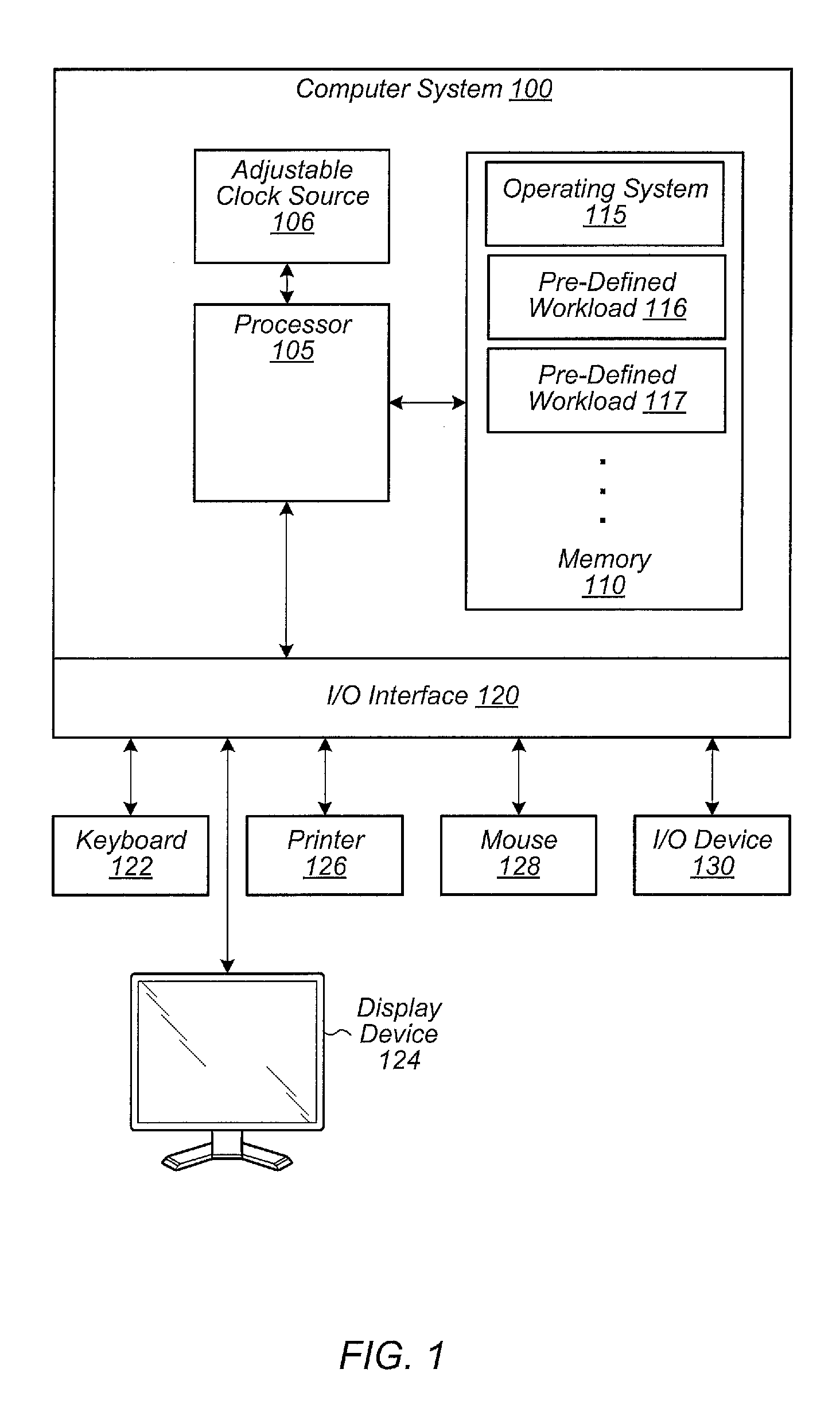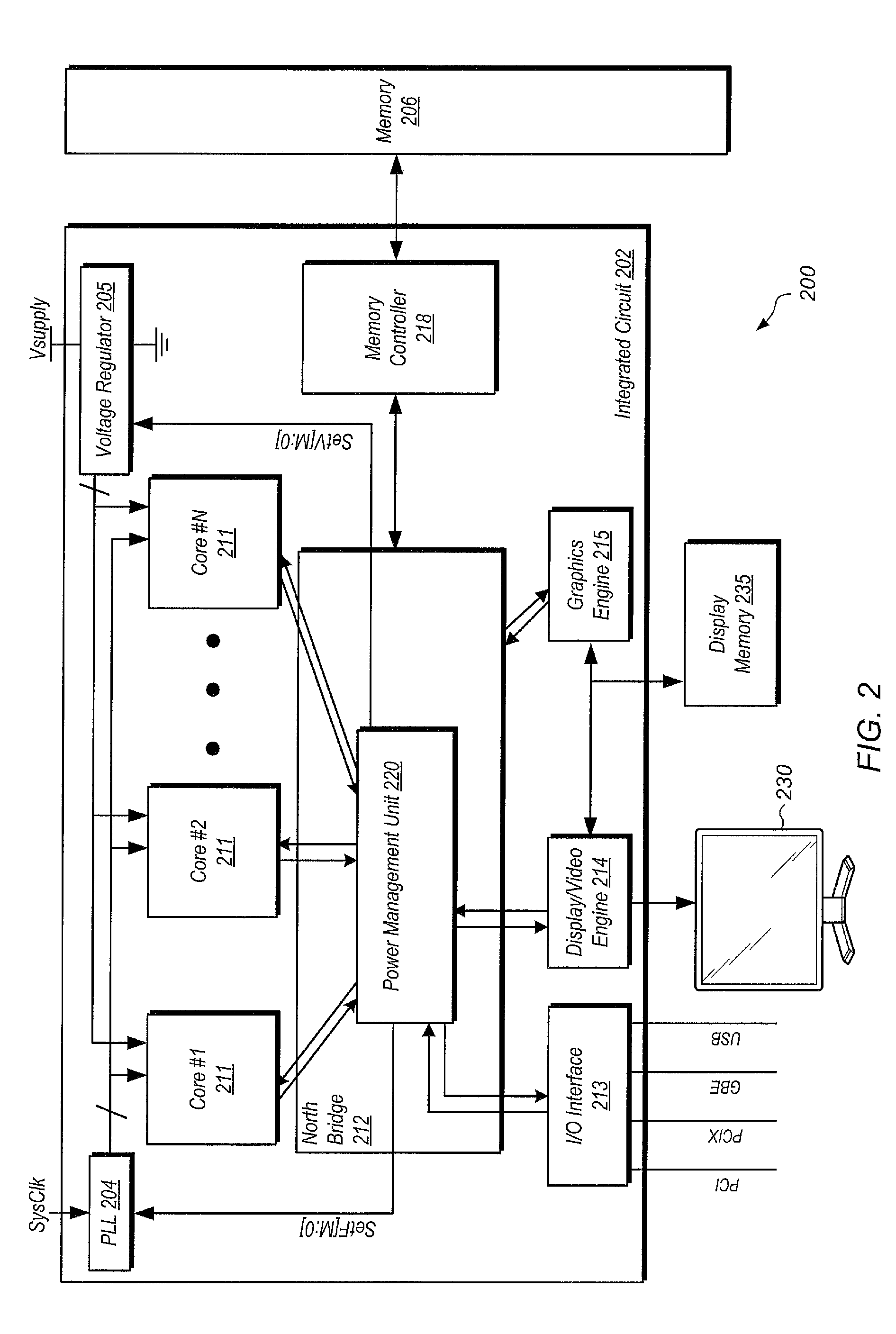Adjusting the clock frequency of a processing unit in real-time based on a frequency sensitivity value
a technology of clock frequency and processing unit, applied in the field of processing units, can solve the problems of affecting the application running on the core, affecting the accuracy of clock frequency, and often making haphazard decisions at the software level about setting the frequency,
- Summary
- Abstract
- Description
- Claims
- Application Information
AI Technical Summary
Problems solved by technology
Method used
Image
Examples
Embodiment Construction
[0009]Various embodiments of systems, methods and mediums for adjusting an input clock frequency to a processing unit are contemplated. In one embodiment, a training session may be implemented for the processing unit using one or more pre-defined benchmark workloads. For each of the pre-defined workloads, the performance value of the processing unit may be measured at two or more input clock frequencies. Additionally, measurements of one or more hardware performance counters may be taken and stored at one or more clock frequencies. The training session may be used to characterize the performance and frequency sensitivity of the processing unit.
[0010]In various embodiments, the one or more hardware performance counters may measure instructions per cycle (IPC), memory controller bandwidth, committed instructions per second (CIPS), cache hits, cache misses, branch mispredictions, instructions issued, interrupts, non-cache accesses, pipeline stalls, and / or other metrics. The hardware pe...
PUM
 Login to View More
Login to View More Abstract
Description
Claims
Application Information
 Login to View More
Login to View More - R&D
- Intellectual Property
- Life Sciences
- Materials
- Tech Scout
- Unparalleled Data Quality
- Higher Quality Content
- 60% Fewer Hallucinations
Browse by: Latest US Patents, China's latest patents, Technical Efficacy Thesaurus, Application Domain, Technology Topic, Popular Technical Reports.
© 2025 PatSnap. All rights reserved.Legal|Privacy policy|Modern Slavery Act Transparency Statement|Sitemap|About US| Contact US: help@patsnap.com



